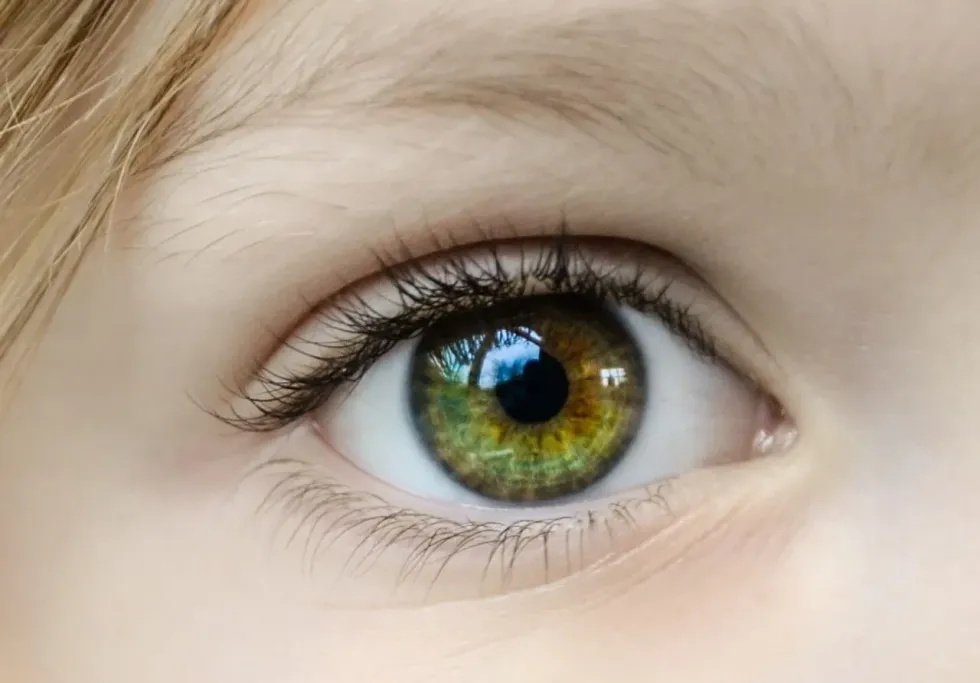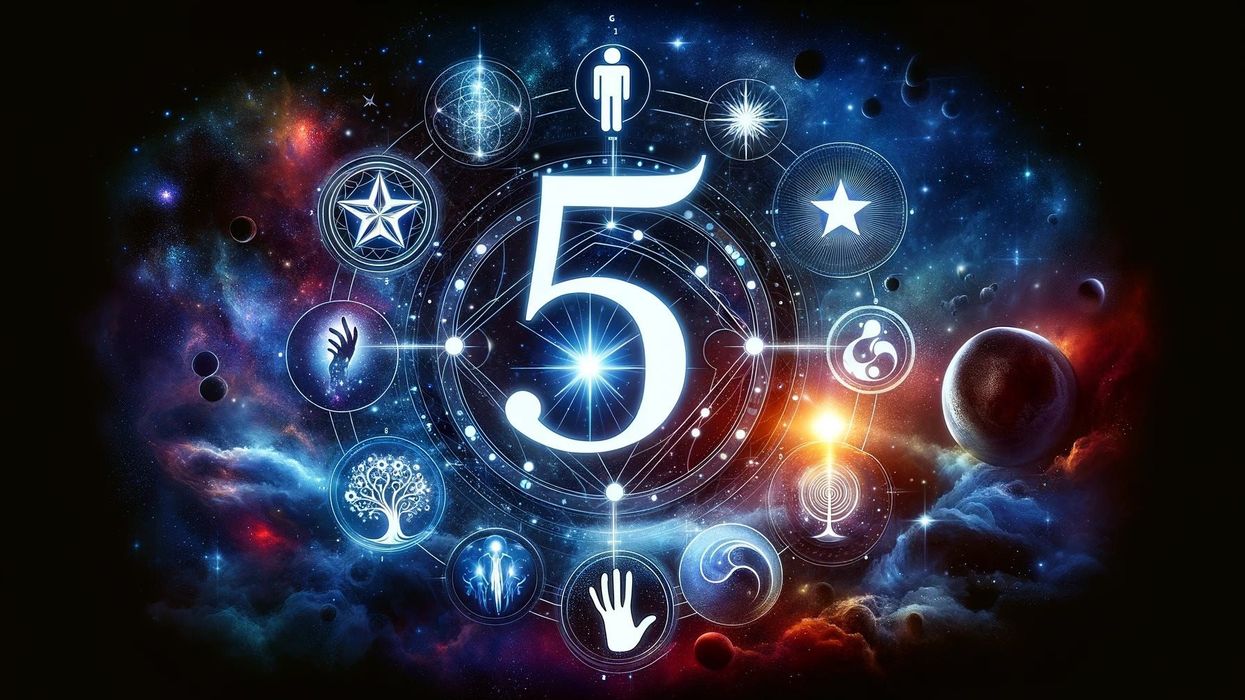The eyes are an essential part of the human body's visual system and allow us to see our surroundings, distinguish shapes and see variations of color, hue, and shade.
They are one of the most fascinating and complex parts of the human body, partly because of how they work but also due to eye color and how it varies between individuals, even those from the same family.
Brown and blue eye colors are relatively common, but hazel eyes are often seen as more mysterious and unique because of the color variations of hazel-eyed people.
Our facts about hazel eyes explore what the color hazel is and how the personality of those with hazel eyes is supposedly different from those with green, blue, or brown eyes.
Did you know, for example, that people with hazel eye color seemingly have a keen interest in learning about their horoscopes and zodiac sign, especially if they are a Scorpio or Cancer?
Characteristics Of Hazel Eyes
For many people, defining hazel eyes and their color can be tricky because of the different types of hazel eyes that people have and the mix of colors they can contain. However, these facts about hazel eyes below are designed to help you better understand what hazel eyes really are and what they look like.
1. The color of hazel eyes can often be difficult to describe as hazel eyes appear to change depending on what the person wears or what the lighting is like. Still, they are generally described as multi-colored, with green or brown shades and light brown or gold flecks.
2. There are two primary examples of hazel eyes: those with brown as the dominant color in the iris and those with green.
3. Hazel eyes are incredibly unique, with no two pairs of hazel eyes looking the same, and some individuals will look like they have greenish eyes. In contrast, other eyes may have a brownish or even amber tint instead.
4. Nearly 75% of people with hazel eyes will have what looks to be a brown ring located around their pupils.
5. Hazel-colored eyes can change color temporarily depending on the mood and emotions of the individual at the time and make them appear brighter or darker.
6. Many hazel eyes have a burst-like pattern of various colors, making them distinctly different from green eyes, which are more of a single hue.
7. Hazel-colored eyes can turn a reddish color if the individual is suffering from allergies such as hayfever.
8. Some have suggested that hazel eyes are called so because the eye color is similar to the shell of a hazelnut.
Hazel Eyes In The World Population
Now that we know a little bit more about what hazel eyes look like and the characteristics that help define them, it would be interesting to find out a bit more about how common they are, who is most likely to have hazel eyes, and where in the world people with hazel eyes are found the most.
Read on to discover what we found out!
9. Only 5% of the world's population has hazel eyes, which is incredibly rare compared to people with blue eyes, who make up 8-10% of the population, and those with brown eyes, making a staggering 79%.
10. Hazel eyes are not the rarest eye color; however, grey eyes, violet eyes, red eyes, and heterochromia (two different colored eyes) are even more uncommon.
11. Hazel eyes are most common in people of Brazilian, Spanish, Middle Eastern, or North African descent.
12. Many famous actors and singers have hazel eyes, including Lady Gaga, Angelina Jolie, Channing Tatum, Jude Law, Kevin Jonas, David Beckham, Ryan Reynolds, Ben Affleck, and Zendaya.
13. Many people wish to have hazel eyes because they see them as more attractive than other colored eyes, so hazel contact lenses are pretty popular.
14. Hazel eyes appear commonly in Caucasian populations, especially where there is a mix of people with brown eyes, blue eyes, and green eyes.
15. In a poll about the most attractive eyes, hazel came out as one of the favorite eye colors, coming second only to green.
16. Hazel eyes have been the topic of many songs, including those by Kelly Clarkson and The Darkness.
Facts About Hazel Eyed People
Have you ever wondered whether people with hazel eyes are different to others in more ways than just their eye color? These interesting facts about people with hazel eyes relate to aspects of their personality, likes, and dislikes.
Although not proven, it is said that the eyes are like the window to each person and that people with different eye colors have different traits. These facts are just for fun and reveal what hazel eyes may say about a person.
17. Hazel-colored eyes are said to reveal that the person is independent and likes to be able to accomplish things without the help of others.
18. People with hazel-colored eyes tend to be adventurous and more likely to take risks which is why they love extreme sports such as rock climbing and snowboarding which differs from those with blue eyes, which are said to be more cautious.
19. Hazel-eyed people are said to be very responsible, and even though they like to take risks, they will always think carefully before they do something.
20. Like those with brown eyes, hazel-eyed individuals are fun-loving and easy-going, never letting themselves stay sad for too long when things go wrong and always maintaining a cheerful spirit.
21. Having a hazel eye color supposedly makes individuals more sensitive to pain than those with blue eyes.
22. It is theorized that those with hazel-colored eyes have great social skills and find it easy to make friends and keep friendships for a long time.
23. Hazel-eyed individuals are said to be trustworthy and reliable, meaning that if you have a problem or need help with something, they will always be there for you.
24. Being funny and witty are said to be traits of those with hazel eyes, so if you have a comedian in the family that always makes you laugh, take a look and see if they have this unique eye color!
25. Apparently, people with hazel eyes don't like conflict and arguments, and so from a young age, they learn ways to avoid it.
26. If you have hazel eyes, you are said to be very creative and have a great imagination, so there are many actors and musicians with this distinctive eye color.
27. People with hazel eyes are often described as elegant and mysterious, meaning that they look graceful and that their actions and style are very dignified but that they also give off a vibe that makes you want to find out more about them.
28. Those with hazel eyes who like to wear makeup often choose eyeshadows that are chocolate brown, gold, or green as they make their eye color stand out even more.

Hazel Colored Eyes And Science
Scientists are continually learning more about hazel eyes and exploring the science behind what causes the individuality of hazel eye color compared to blue, green, and brown eyes.
While no two eyes are exactly the same, much like fingerprints, the variation of eye color comes under the hazel eye color heading, making it a fascinating subject from a scientific perspective.
29. It is thought that up to 16 different genes contribute to a person's eye color, so even if both parents have brown eyes, a child can still have hazel eyes. No one can accurately determine a child's eye color before it is born.
30. Rayleigh scattering is an optical phenomenon that causes the sky to look blue. It is also responsible for the way light scatters about in hazel eyes and contributes to the different colors that can be seen in hazel eyes color.
31. Scientists often refer to hazel-colored eyes as the 'eye color chameleon' as hazel eye color is the only one that doesn't have a universal description due to the variety of colors that can be included in just one eye.
32. Hazel eyes have less melanin; the skin color pigment causes people to tan in the sun than blue eyes but less than brown eyes.
This moderate amount of melanin tends to be concentrated on the outer part of the iris, making the eye look lighter closer to the pupil, although this is not always the case, and it can sometimes be the other way round.
33. Babies with blue eyes can grow up to have a hazel eye color instead, as it can take time for the melanin to be deposited into the eyes. This can take as little as six months but can take up to two years.
34. Hazel eyes, like other eye colors, result from genetic mutation, and scientists have discovered that around ten thousand years ago, everyone on the planet had brown eyes.
35. Hazel eyes can appear to change color right in front of you due to the pupil changing size. As the pupil gets bigger or smaller to allow more or less light into the eye, the iris, the colored part of the eye, compresses or spreads apart, making the color look different.
36. Hazel-colored eyes are more reflective than other eye colors such as brown and can reflect the colors in the environment around them, such as green from trees or amber from the sunlight, which can appear to change color throughout the day.
What Causes Hazel Eyes
The most common cause of hazel eyes is a combination of Rayleigh scattering and a moderate quantity of melanin within the anterior border layer of Iris. Hazel-colored eyes sometimes appear to fluctuate rapidly in color or to have several tints at once, such as brown, golden, and even green.
The shades frequently blend to produce a lighter brown with hints of green.
Most of us were taught that our eye color is inherited from our parents and that brown is dominant and blue is recessive. That means that two blue-eyed parents cannot conceive a kid with brown eyes since neither parent contains the prevalent version of the brown-eyed gene.
However, recent studies have revealed that up to 16 genes may be involved in determining eye color.
Because there is no particular shade of hazel, they are both complex and magnificent. Many variables influence the color, like the amount and distribution of melanin in the iris and how sunlight scatters inside the iris and pigmented molecules.
In addition, the color of one's eyes might vary considerably over the first few years of life. Many white, non-Hispanic kids are born with blue eyes that change to brown, green, or hazel as they grow.
This phenomenon has little to do with genetics, and Hazel-colored eyes, like everything else, depend on various internal and environmental factors, which makes each hazel eye unique.









